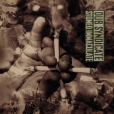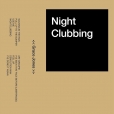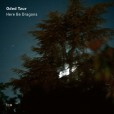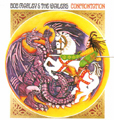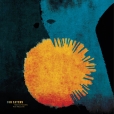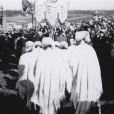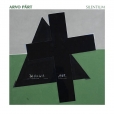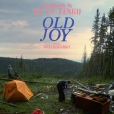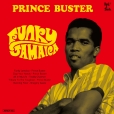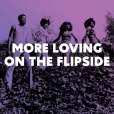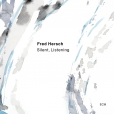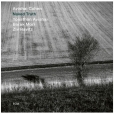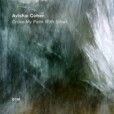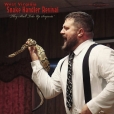Your basket is empty

‘Style Scott and Flabba Holt, bedrock of the mighty Roots Radics, holding together the monstrous rhythms, while Adrian Sherwood works his magic at the controls. Features guest appearances from Lee Perry, Michael Franti, and Talvin Singh.’
‘From 1996, with Style Scott gathering even more crack Jamaican players together for the rhythms, featuring musicians who between them had done time in the likes of the Roots Radics, Soul Syndicate, Joe Gibbs’ Professionals, and Bunny Lee’s Aggrovators.
‘This incredible legacy is augmented by Adrian Sherwood’s work at the mixing desk back in London, overdubbing the London-based Skip McDonald and Akabu, and working his sonic magic on the raw material, a true transatlantic dub collaboration.’
‘A brand new set of Dub Syndicate excursions utilising rhythms from their classic 1989 - 1996 period. Adrian Sherwood has gone back to the original tapes, working his mixing desk magic to find new angles on the timeless pulse of Lincoln Valentine ‘Style’ Scott, with fresh overdubs from Cyrus Richard (Dub Asante Band). Featuring new dubs of tracks originally found on albums such as Time Boom X De Devil Dead and Stoned Immaculate.’
‘Probably the best known Dub Syndicate album, this 1991 set was recorded between Jamaica and London, with the rock solid rhythms of band leader Style Scott augmented by a number of additional players, including guitar from Skip McDonald, vocals by Lee Perry and Akabu, samples of the late, great Prince Far I, and keyboards from Keith Levene.’
‘Another great set, with vocal contributions from mainstay Bim Sherman on a cover of Lloyd & Devon’s Cuss Cuss, and Shara Nelson (just prior to Blue Lines) on a version of Serge Gainsbourg’s Je T’aime. Originally released in 1989 and coinciding with the beginnings of Dub Syndicate as a touring unit.’
‘This improvised, telepathic collaboration between underground legend Rob Mazurek and modular-synth maestro Alberto Novello is a dizzying, psychedelic space ritual. A delicate weft of harmony and melody on trumpet — plus atmospheric bells and samples — rides a loose rhythmic, timbral magic carpet, way out into uncharted dimensions of sound.’
“Transportées is an electroacoustic work. From archaic to electronic trance, a musical thread runs from Brittany to Tunisia. We follow a trance-like path through recordings, traces of oral traditions. At the root of this composition is my taste for archives and my fascination with songs that have been captured, recorded and fixed. With my microphones, I follow a documentary and musical path that, between Brittany, Germany and Tunisia, crosses the first sound recordings fixed on flat discs, oral transmission, the energy of the return to the homeland and a K7. On this K7, a mother passes on an endangered repertoire to her son, who records it. Transportées starts with this K7.”
‘From 1972, the third and last album by this group formed in Johannesburg’s Alexandra township in 1968, announcing a shift away from early Memphis soul influences towards a pioneering African-driven jazz sound, and laying the foundations for the afro-fusion scene spearheaded by groups like Batsumi, The Drive, and Harari.
‘Black Soul features a who’s who of musicians from great South African bands over the decades: Zacks Nkosi, the renowned bandleader of the Jazz Maniacs and long-time member of the African Swingsters in the 1940s and 50s; kwela star Little Kid Lex Hendricks, known for his Columbia recordings of the late 1950s; Zack’s son Jabu Nkosi, who would go on to play with The Drive, Roots and Sakhile; and Banza Kgasoane later a member of The Beaters, Harari, and then Mango Groove.’
The long awaited follow-up to the superb compilation Loving On The Flipside, from ten years ago.
‘Contained within this anthology are some of the greatest soul ballads that go sweet with a beat. Most of these songs have never been compiled. Some have never been issued in any form. Some, like the Ledgends entry here, have been sampled to great success (in that case for Freddie Gibbs and Madlib’s Deeper). Some haven’t been sampled, but, like Herb Johnson’s entry, are patiently awaiting their day.’
Electrifying extracts from a Sunday service in the last snake-handling church in the Appalachians: the trance-like rhythms of a demented kind of rockabilly punk, with duelling guitars, concussive trap drums, and possessed, howling vocals.
“I’d sworn to stay far away from the snakes at the service,” recalls the recording engineer, “but instead they were waved in my face as they coiled in the preachers’ hands, and I crouched down at the foot of the altar tending to the equipment. The pastor soon was bitten and blood splattered, pooling on the floor. The female parishioners hurriedly came to wipe up the mess, and it instantly became clear just what the rolls of paper towels stacked on the pulpit had been for. You can actually hear this moment transpire towards the end of the track ‘Don’t Worry It’s Just a Snakebite (What Has Happened to This Generation?)’. The congregation leapt to its feet and a mini mosh-pit formed. The tag-team preachers huffed handkerchiefs soaked in strychnine, as they circled like aggro frontmen and an elderly worshipper held the flame of a candle to her throat, closing her eyes and swaying. The church PA blew out from the screams as a bonnet-wearing senior whacked away at a trap kit that dwarfed her. It was the most metal thing I’d ever seen, rendering Slayer mere kids play.”




